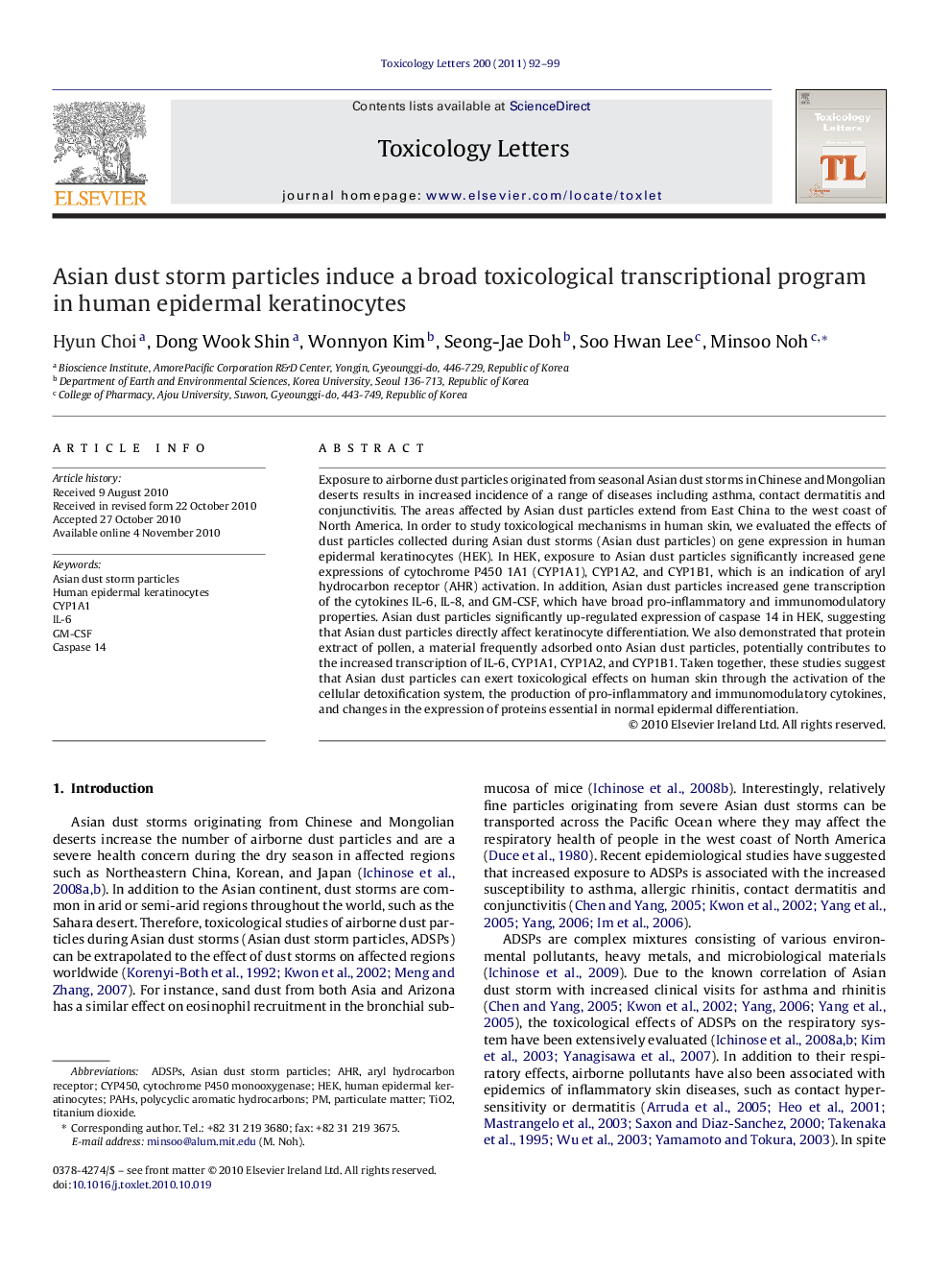| Article ID | Journal | Published Year | Pages | File Type |
|---|---|---|---|---|
| 2600019 | Toxicology Letters | 2011 | 8 Pages |
Exposure to airborne dust particles originated from seasonal Asian dust storms in Chinese and Mongolian deserts results in increased incidence of a range of diseases including asthma, contact dermatitis and conjunctivitis. The areas affected by Asian dust particles extend from East China to the west coast of North America. In order to study toxicological mechanisms in human skin, we evaluated the effects of dust particles collected during Asian dust storms (Asian dust particles) on gene expression in human epidermal keratinocytes (HEK). In HEK, exposure to Asian dust particles significantly increased gene expressions of cytochrome P450 1A1 (CYP1A1), CYP1A2, and CYP1B1, which is an indication of aryl hydrocarbon receptor (AHR) activation. In addition, Asian dust particles increased gene transcription of the cytokines IL-6, IL-8, and GM-CSF, which have broad pro-inflammatory and immunomodulatory properties. Asian dust particles significantly up-regulated expression of caspase 14 in HEK, suggesting that Asian dust particles directly affect keratinocyte differentiation. We also demonstrated that protein extract of pollen, a material frequently adsorbed onto Asian dust particles, potentially contributes to the increased transcription of IL-6, CYP1A1, CYP1A2, and CYP1B1. Taken together, these studies suggest that Asian dust particles can exert toxicological effects on human skin through the activation of the cellular detoxification system, the production of pro-inflammatory and immunomodulatory cytokines, and changes in the expression of proteins essential in normal epidermal differentiation.
